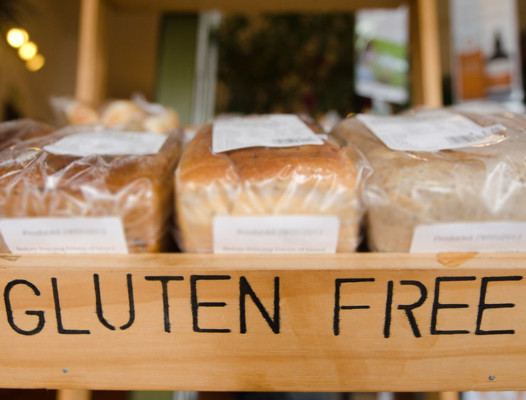
Gluten Free in Baking
Also Known as GF, Celiac Disease, Gluten Allergy
What is Gluten Free?
Celiac disease sufferers cannot consume gluten containing foods. Ingredients in bakery products that contain gluten include wheat, rye, triticale, and spelt.
- When developing gluten-free products, keep in mind that the lack of gluten causes structural problems in gas retention.
- So, the best approach is to understand the function of the proteins in a gluten-free system, and to replace gluten using a combination of proteins, starch and gums.
Replacing gluten
In order to replace gluten, you must combine functional ingredients that provide the elastic, viscous and extensible properties of gluten.1 In all gluten-free systems, the functional ingredients fall into two categories:1
- Proteins that will provide the elasticity and strength to the system
- Carbohydrates (pre-gel starches and gums) that will provide the viscosity and extensibility.
Optimizing GF bread formulas with the correct amount of water and functional ingredients are a challenge. Xanthan gum, psyllium husk powder and HPMC are the most suitable hydrocolloids identified so far.2 Egg protein and specially-treated corn protein are promising structural ingredients.2 Functional ingredients can be broken down into the following categories:
- Gluten-free flours: GF flours add nutrition level, bulk, high protein value, and essential amino acids. They might be made from legumes (pulses), gluten-free grains, or pseudocereals.3
- Starches: Starch has the ability to increase the viscosity and extensibility of doughs.1 Starches can also improve shelf-life and stability.
- Hydrocolloids and gums: Used as a thickening agent, helping in swelling, for stabilization, for gelatinization and as a humectant agent.3
- Proteins: Added during dough preparation to form a network similar to what gluten does in bread production.3 Provide strength and structure to doughs and helps add back valuable nutrition lost when replacing gluten.
- Enzymes: Promote protein networks needed to increase dough elasticity when combined with the correct GF flour and proteins.2
- Sourdough: increases enzyme activity and aids flavor development.3
- Fat, oil and emulsifiers: Used to increase dough stiffness, improve the bread structure and decrease the speed of staling.3
Gluten Free Baking Processes
On the other end of this issue is the production processes used for baking. GF mixes tend to resemble a batter rather than a dough. Bakers will need to adjust the following:
- Mixing time: short and quick in order to disperse and hydrate.1
- Water absorption: allow enough floor time for the dough to absorb remaining water and dry up for easier handling.1
- Fermentation: allow enough time to develop flavor,
- Bake times: beware of over baking. Using a thermal profiler will enable you to determine crumb step. Knowing the baking parameters of your GF product is important to keep producing the same product texture.1
FDA Regulation
The FDA defines gluten-free as a food that is either inherently gluten-free, or does not contain an ingredient that is:
- A gluten-containing grain (e.g. rye, spelt, triticale and wheat)
- Obtained from a gluten-containing grain that has been processed to remove gluten (e.g. wheat starch)
- Derived from a gluten-containing grain that has been processed to remove gluten (e.g. wheat starch), if the use of that ingredient results in less than 20 parts per million (ppm) of gluten in the food. In addition, any unavoidable presence of gluten in the food must be less than 20 ppm.
References
- Carson, Lin, Ph.D. “Gluten- Free: If It Sticks.” E-book. BAKERpedia, 2017
- Zannini, Emanuele, Julie Miller Jones, Stefano Renzetti, and Elke K Arendt. “Functional Replacements for Gluten.” Annual Review of Food Science and Technology 3 (2012): 227-245.
- Houben, Andreas, Agnes Höchstötter, and Thomas Becker. “Possibilities to increase the quality in gluten-free bread production: an overview.” European Food Research and Technology 235.2 (2012): 195-208.

